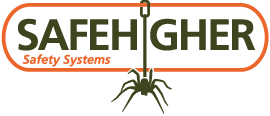In any workplace, safety is paramount, especially when it comes to tasks performed at heights. Whether it’s construction, maintenance, or any other industry, working at height poses significant risks that must be addressed effectively. In the UK, regulations such as the Work at Height Regulations 2005 provide a framework for employers and employees to manage these risks. In this article, we’ll delve into some common work-at-height hazards and explore strategies for their prevention and mitigation.
- Fall Prevention Planning: Before any work at height begins, it’s essential to conduct a thorough risk assessment. Identify potential fall hazards, assess the risks, and plan appropriate control measures. This planning should consider factors such as the height of the task, the duration of work, weather conditions, and the competency of workers.
- Proper Equipment Selection: Using the right equipment is critical for ensuring safety when working at height. This includes choosing appropriate ladders, scaffolds, platforms, and personal protective equipment (PPE). Ensure that equipment is properly maintained, inspected regularly, and compliant with relevant British and European standards.
- Training and Competency: Workers involved in tasks at height must receive adequate training and supervision. Training should cover topics such as safe working practices, equipment usage, emergency procedures, and hazard recognition. Employers should also assess the competency of workers to perform their tasks safely.
- Guardrails and Edge Protection: Where possible, install guard-rails, barriers, or other edge protection systems to prevent falls from height. These physical barriers provide a passive form of protection and can significantly reduce the risk of accidents.
- Fall Arrest Systems: In situations where fall hazards cannot be eliminated, fall arrest systems should be used as a last line of defence. These systems typically include harnesses, lanyards, and anchor points designed to arrest a fall and minimise the risk of injury.
- Regular Inspections and Maintenance: Regular inspections of work-at-height equipment and structures are essential to identify any defects or issues that could compromise safety. Inspections should be conducted by competent personnel and documented appropriately. Any defective equipment should be taken out of service immediately for repair or replacement.
- Safe Access and Egress: Providing safe access and egress to work areas at height is crucial for preventing accidents. Ensure that stairways, ladders, and access equipment are properly designed, installed, and maintained to minimise the risk of slips, trips, and falls.
- Weather Considerations: Weather conditions can significantly impact the safety of work at height. High winds, rain, ice, or snow can increase the risk of slips, falls, and accidents. Monitor weather forecasts regularly and postpone work if conditions are unsuitable.
- Supervision and Monitoring: Employers should ensure that work at height is adequately supervised, and workers are monitored for compliance with safety procedures. Supervisors should be trained to recognise unsafe behaviour and intervene when necessary to prevent accidents.
- Emergency Preparedness: Despite all preventive measures, accidents can still occur. Therefore, it’s essential to have robust emergency procedures in place. This includes procedures for rescuing workers from height, administering first aid, and reporting incidents to the relevant authorities.
By implementing these strategies, employers can effectively address common work-at-height hazards and create a safer working environment for their employees. Remember, safety should always be a top priority, and investing in preventive measures is key to avoiding costly accidents and injuries.
